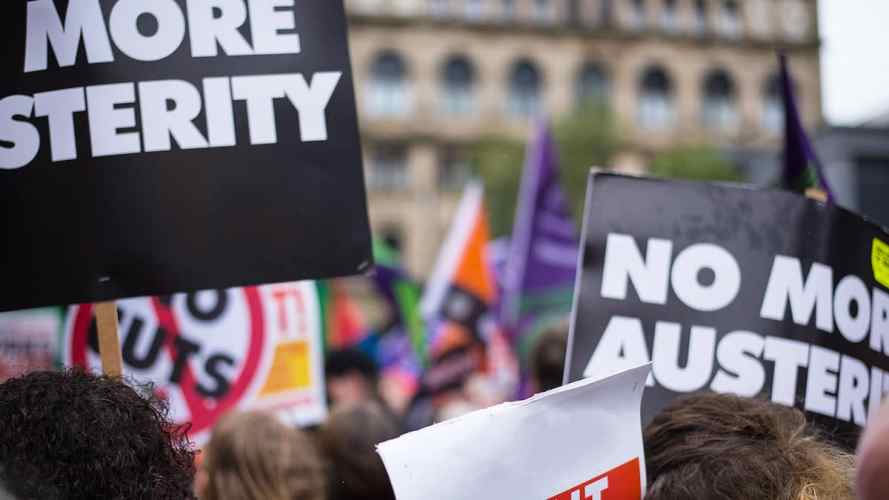The COVID-19 outbreak poses a significant world crisis in our lives. Government workers are at the forefront of responding to all these stresses. They build confidence, care for the vulnerable, and enable communities to heal and rebuild.
Governments have always been responsible for critical services that we count on every day, including health, safety, and economic stability functions. But they rarely face situations so urgent and widespread. I served as a senior executive and CIO in the U.S. federal government for many years, through business-stopping hurricanes, disruptive protests, government shutdowns, and one 50-inch snowstorm. While the current crisis scale is much larger now, many principles and patterns for dealing with emergencies remain the same.
Recent events have caused me to think about the crisis management principles that got us through previous difficulties. Despite the challenges our government faces, this crisis can catalyze a much-needed transformation. Here are some core principles that can help government leaders manage successfully in this situation and beyond:
Get back to basics
Focus on your organization’s mission and values to guide your actions. Crisis can produce chaos, making it difficult to prioritize and act effectively. Taking a values-driven approach helps you focus on what’s most important, filter out distractions, and take appropriate action to support your employees and customers.
I’ve said it before, trust is the currency of government, which has only been amplified in recent months. We’ve all read and heard about government operations that failed to uphold that trust. The websites overloaded by citizens seeking information. Or unemployment benefits programs that couldn’t deliver because people needed to apply and sign up in-person. Many employees were left stranded when trying to work from home, due to inflexible infrastructure.
To deliver on your mission, you need systems that are scalable, secure, and easy to adapt as the situation changes. On top of that, governments need to be on the same communication channels people and business owners use to deliver information and services reliably.
For example, the City of Chicago listens to residents’ concerns expressed on social media. They use those sentiments to guide their public response efforts. They prioritize questions, feed responses into daily press conferences, and deliver consistent and timely COVID-19 communications back out to the public, citywide.
Lead with empathy
One thing COVID-19 has taught us is that it’s not just about the process of delivering great customer service — it’s about listening first and taking action informed by empathy and kindness. None of us knows exactly which actions to take, but starting by putting ourselves in our customers’ and employees’ shoes is always a helpful and goodwill-building step.
For example, at Salesforce, we’ve focused on three things: the health and safety of our employees, helping our customers navigate this crisis, and supporting our communities. Our CEO and top leadership team host an all-hands town hall every week to share new developments and take employee questions. We host frequent “B-Well Together” sessions open to the public, featuring experts on wellness, home cooking, early childhood education, and other practical challenges we face in a quarantine. And we’ve launched Work.com to help our customers reopen their workplaces, safely.
As government leaders, you have a big impact. Each of you makes mission-critical decisions that affect patients, residents, customers, and employees. Think about what small steps you can take to act with kindness and demonstrate empathy.
Enable your team to decide and act quickly
The COVID-19 crisis has three broad stages: initial response efforts, longer-term recovery and reopening workplaces, and finally, reimagining a future informed by this experience to become more resilient and robust. Status quo operations are not sufficient for these times. Leaders have to equip and empower their teams to make good decisions and act quickly.
McKinsey recommends a crisis nerve center to facilitate recovery and reopening. This is a cross-functional team with a clear structure, operational cadence, and decision authority. It would coordinate with other jurisdictions, nonprofits, and private sector organizations.
However, priorities shift, so must your approach. In an era without obvious answers, a “nerve center” structure can provide government leaders with the speed, structure, and organizational clarity required to mount an effective response to the crisis.
Listen to the data
When faced with a crisis, data is a critical asset to determine next steps around how to conduct operations and how to take care of your employees. Leaders and their teams must analyze data from different areas of the business and to contribute to a holistic response effort.
As Tableau’s Executive Vice President of Marketing Jackie Yeaney said, “[Data-driven] communities are well-equipped to approach new data challenges because they already have trust with each other, processes established, and ambassadors to help the rest of the organization move swiftly.”
For example, Salesforce is helping state and local governments in over 35 states with COVID-19 related solutions, to ensure that resources and focus are directed to the areas of greatest need and to improve timely support to those most vulnerable.
Prepare for the new normal
Now that we are moving into the recovery phase, every agency must reimagine the workplace and how we work. Digital transformation is no longer a “nice to have,” but an urgent imperative. This transformation will equip government programs to deliver better service now and be ready for the next challenge.
I hope that these practices I’ve shared help your organization think about how you can adapt, carry out your mission, and begin to plan for longer-term transformation.
While we move into the new normal, I’d like to say thank you to all the government workers worldwide who are on the front lines, providing urgently needed services, and working long hours under very challenging circumstances. We are all very grateful for your service and commitment to your mission and the public good.
If you’d like to learn more about emergency response capabilities and examples of streamlined operations, please view the Public Sector guided tours for detail.




























